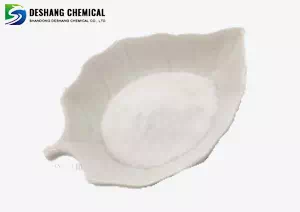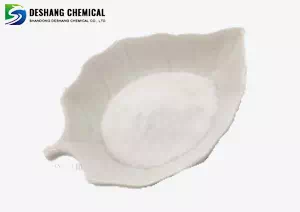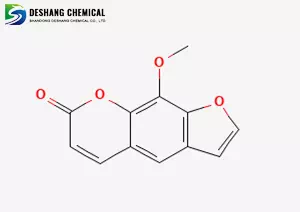All Categories



Methoxsalen CAS 298-81-7, Methoxsalen, CAS 298-81-7
Molecular formula: C₁₂H₈O₄,Molecular weight: 216.19,Alternative names: 8-methoxypsoralen, methoxysarin, xanthan toxin.
CAS : 298-81-7
Formula : C12H8O4
Mol. wt. : 216.19
EINECS : 206-066-9
| CAS | 298-81-7 |
| Molecular formula | C12H8O4 |
| Molecular weight | 216.19 |
| EIENCS | 206-066-9 |
| Form | Needle-Like Crystals or Powder |
| Melting point | 148-150°C |
| boling point | 276.6°C |
| Density | 1.1344 |
| Solubility | H2O: slightly soluble |
| PKA | / |
| Color | white to yellow |
| Storage temp | / |
Molecules and Structures
Molecular formula: C₁₂H₈O₄
Molecular weight: 216.19
Alternative names: 8-methoxypsoralen, methoxysarin, xanthan toxin
Appearance: White to cream-colored crystalline solid. It may turn slightly yellow after long-term storage and has a bitter taste
Melting and boiling points: Melting point 143-148°C, boiling point 414.8°C (760 mmHg)
Solubility
Almost insoluble in water (extremely low water solubility);
Readily soluble in chloroform and acetone, slightly soluble in hot ethanol
Spectroscopy and Stability
Nuclear magnetic resonance (NMR) : Characteristic peak positions 7.764 ppm (aromatic ring H), 4.293 ppm (methoxy H)
Mass spectrometry (MS) : Molecular ion peak m/z 216 (base peak), fragment peaks m/z 173, 201
Stability: It should be stored in a sealed container away from light to prevent oxidation and discoloration
Medical treatment
Dermatology
PUVA therapy: It is used for the treatment of vitiligo and psoriasis. It activates photosensitivity through UVA irradiation and inhibits excessive proliferation of epidermal cells.
Anti-cancer adjuvant: Enhance radiotherapy sensitivity (such as T-cell lymphoma).
Other diseases
The research is used for repigmentation of vitiligo and improvement of fibrosis in scleroderma.
Agriculture and Scientific Research
Plant protection: Naturally present in Sichuan pepper and star anise, it has antispasmodic and antibacterial effects;
Scientific research reagents
Used as a reference material for content determination (HPLC-DAD/ mass spectrometry identification);
Construct a model of the mechanism of action of photosensitive drugs.
Toxicity risk
Acute toxicity: Oral LD₅₀ = 301 mg/kg in rats (harmful to swallowing, R25);
Chronic hazards
Long-term exposure may cause cancer (H350), mutations (H341), and damage liver and kidney organs.
Strong irritation to the eyes, skin and breathing apparatus (R36/37/38).
Operation protection
Essential equipment: Gas mask, chemical protective suit, nitrile gloves, goggles;
Leakage treatment: After the sand and soil are adsorbed, it should be incinerated as hazardous waste (flushing is prohibited to prevent diffusion).
Storage and Transportation
Store in a sealed, light-proof container at room temperature and in a dry place (≤25℃).
Dangerous goods code: UN 3216 (Class 6.1 Toxic substances).
* Prompt reply and 24 hours online, professional team to provide best price and high quality product.
* Sample testing support.
* Every batch of products will be tested to ensureits quality.
*The packing also can be according the customers` requirment.
*Any inquiries will be replied within 24 hours.
*we provide Commerical Invoice, Packing List, Bill of loading, COA , Health certificate and Origin certificate. If your markets have any special requirements, let us know.